Searching for Plants and Butterflies in Cebu’s Fort
Of all the many sites there are to visit in Cebu, one of the principal buildings that should be high on everyone’s list is the Fort of San Pedro, which was the first fort built in the Philippines after the Spanish invaded in 1521 under Ferdinard Magellan.
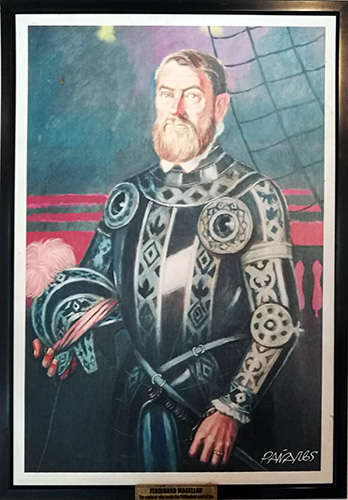
It's a small triangular shaped fort which is only about one eighth the size of Intramuros in Manila. One side faces inland while the other two sides face the sea, and had artillery consisting of 14 mounted cannons, most of which are still visible today. The fort has a total land area of 2,025 sq. metres and its walls are six metres high and 2.5m thick.
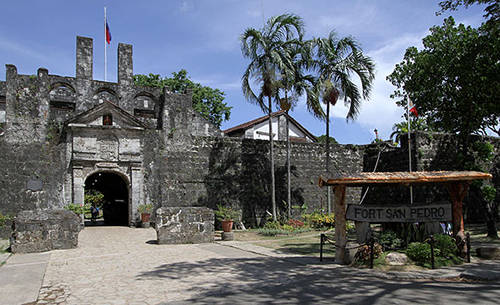
The original fort was built by under the command of Miguel López de Legazpi, first Spanish governor of the Captaincy General of the Philippines.
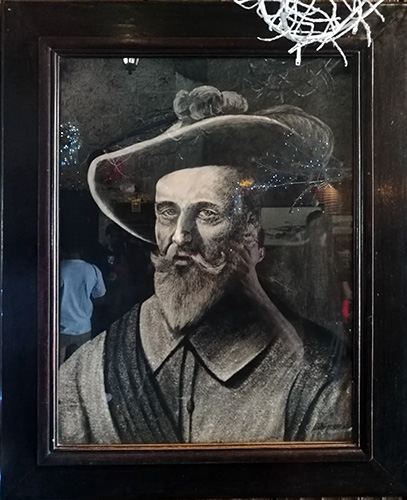
It was made of wood, but in the early 17th century a stone fort was built in order to repel Muslim raiders. It served as the nucleus of the first Spanish settlement in the Philippines.
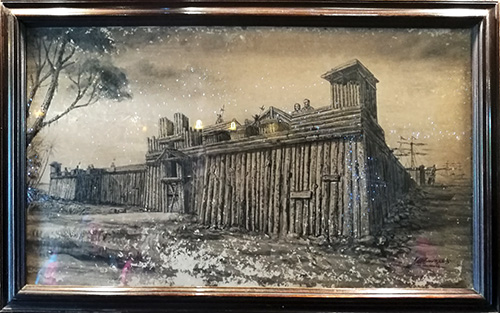
During the Philippine Revolution at the end of the 19th century, it was attacked and taken by Filipino revolutionaries, who used it as a stronghold.
The Cebu City Government assumed responsibility for the management of Fort San Pedro in Feb 1, 2008. It has prioritized heritage conservation and biodiversity preservation; but it decided to transfer the old artefacts of the Museum to Museo Sugbo: The Cebu Provincial Museum, so there’s not a great deal to see here, unfortunately.
However, there are plenty of old pictures and photographs to give an idea of what the place looked like over the centuries.
In one room, for instance, you will come across pictures of the landing of the Spaniards on Cebu Island…
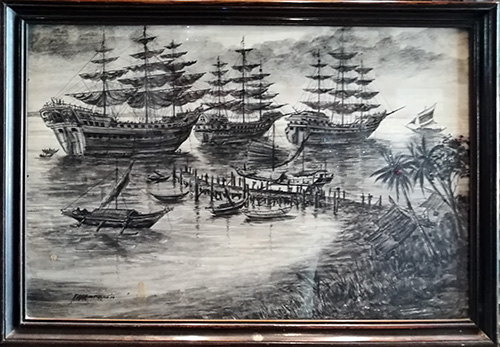
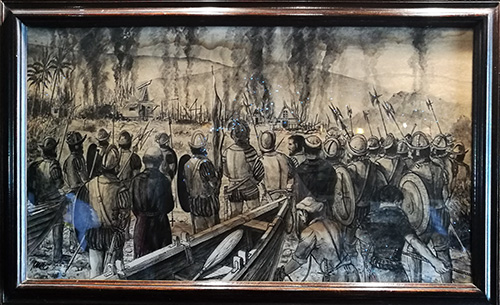
… Rajah Humabon of Cebu actually welcomed Magellan and the Spaniards; and both he and his queen Hara Amihan were baptized as Christians, this symbolising the start of the Christian conversion of the Philippine islands.
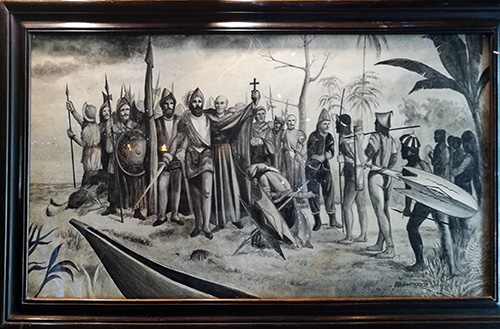
Now, I know what you’re thinking… Surely Ferdinand Magellan was a Portuguese explorer? Well, he was, of course, born into a Portuguese noble family in around 1480, and became a skilled sailor and naval officer. But he was eventually selected by King Charles I of Spain to search for a westward route to the Maluku Islands (the "Spice Islands"). And so it was that he organised a Spanish expedition to the East Indies from 1519 to 1522, resulting in the first circumnavigation of the Earth, which was completed by Juan Sebastián Elcano.
In another room, we learn of Magellan’s death. After baptising Rajah Humabon, the latter and his ally Datu Zula convinced Magellan to kill their enemy, Datu Lapu-Lapu, on Mactan. Magellan wanted to convert Lapu-Lapu to Christianity, as he had Humabon, but Lapu-Lapu said no way!
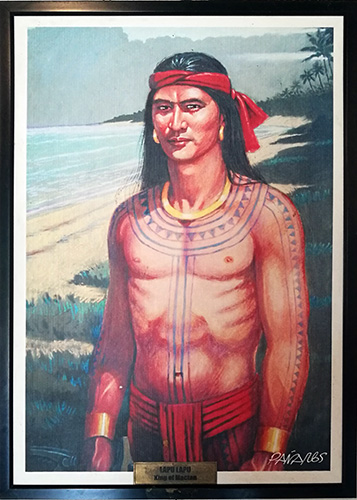
So, on the morning of 27 April 1521, Magellan sailed to Mactan with a small attack force. During the resulting Battle of Mactan against Lapu-Lapu's troops, Magellan was struck by a bamboo spear, and later surrounded and finished off.
Walking around the fort is a bit like walking around intramuros in Manila, though on a much smaller scale.
At each of the three corners of the Fort are towers that served as bastions, or viewing decks. These are La Concepcion at the southwest, Ignacio de Loyola at the southeast, and San Miguel at the North.
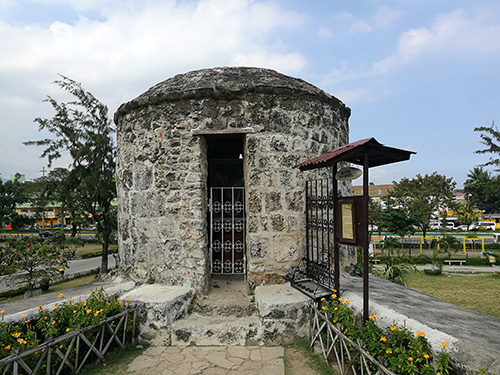
To maintain diversity of life within the Fort, the management has embarked on a conservation program. Down in the courtyard, for example, is a collection of Cebu’s pre-Hispanic and Hispanic agricultural plants that are being reintroduced.
Around the battlements, however, you’ll find an attractive use for worn-out car and truck tyres…
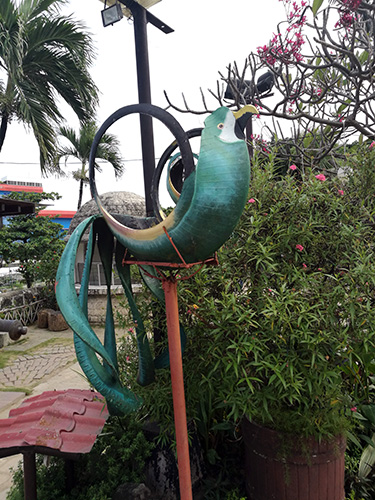
The Bastion La Conception is being landscaped with ornamental plants introduced to the Philippines at an early period, including rosal, pobreng kahoy and bandera española, among others.
The Bastion Ignacion de Loyola is being cultivated with herbs and spices, including indigenous plants with known medicinal benefits. Spices which attracted the Spanish conquistadors to the Philippines in the first place are also planted here.
The Bastion San Miguel, meanwhile, has had a butterfly conservation programme established. A caterpillar chamber has been built and several flowering plants are being cultivated to attract caterpillars and adult butterflies to feed on.
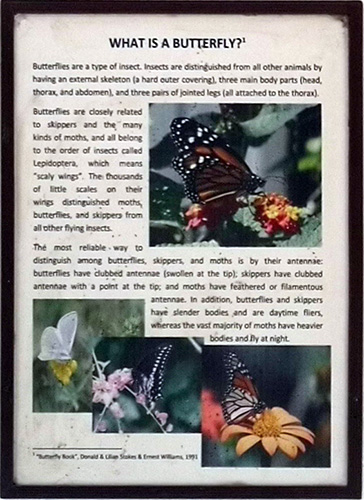
It’s all a far cry from what the Fort was originally established for, but why not?
A visit here won’t take up more than about 45 minutes, but I think you will find it time well spent. Enjoy!
